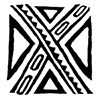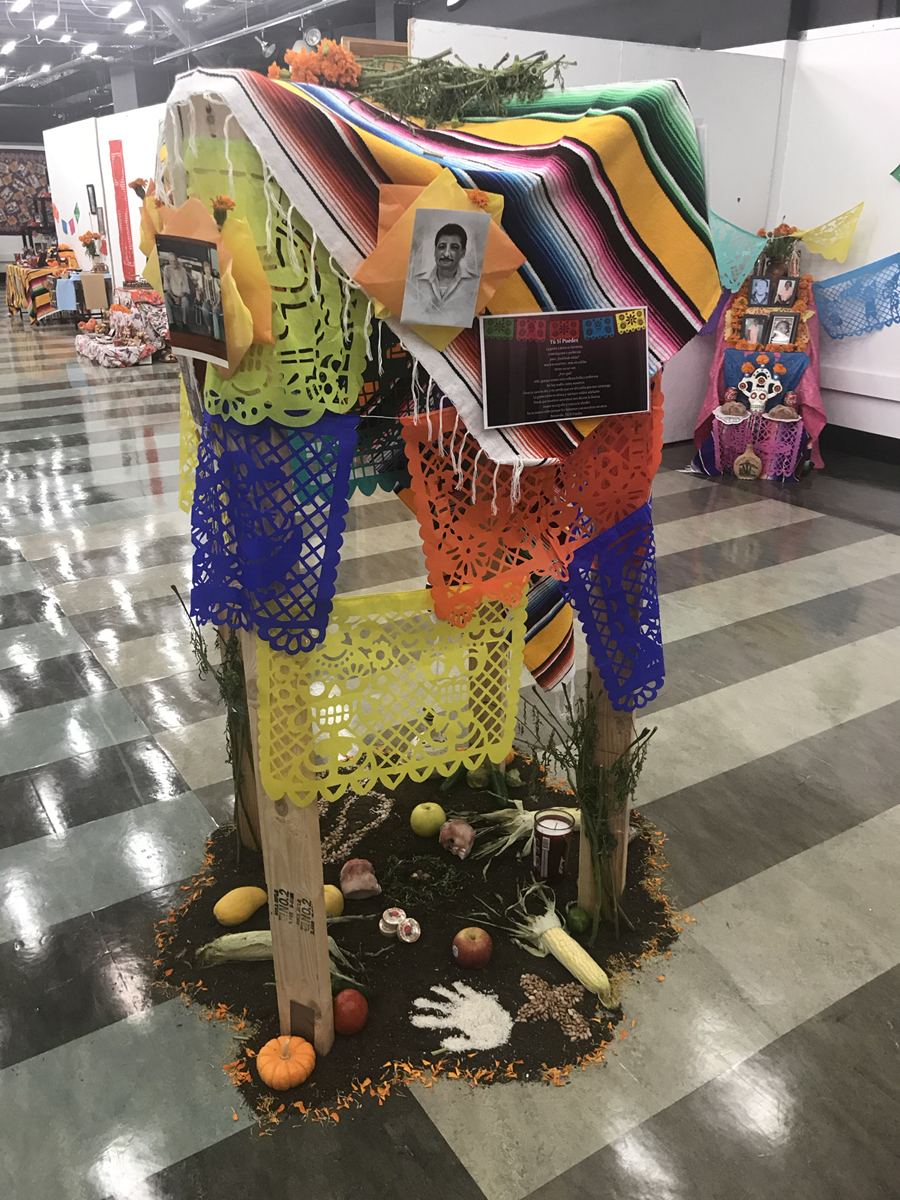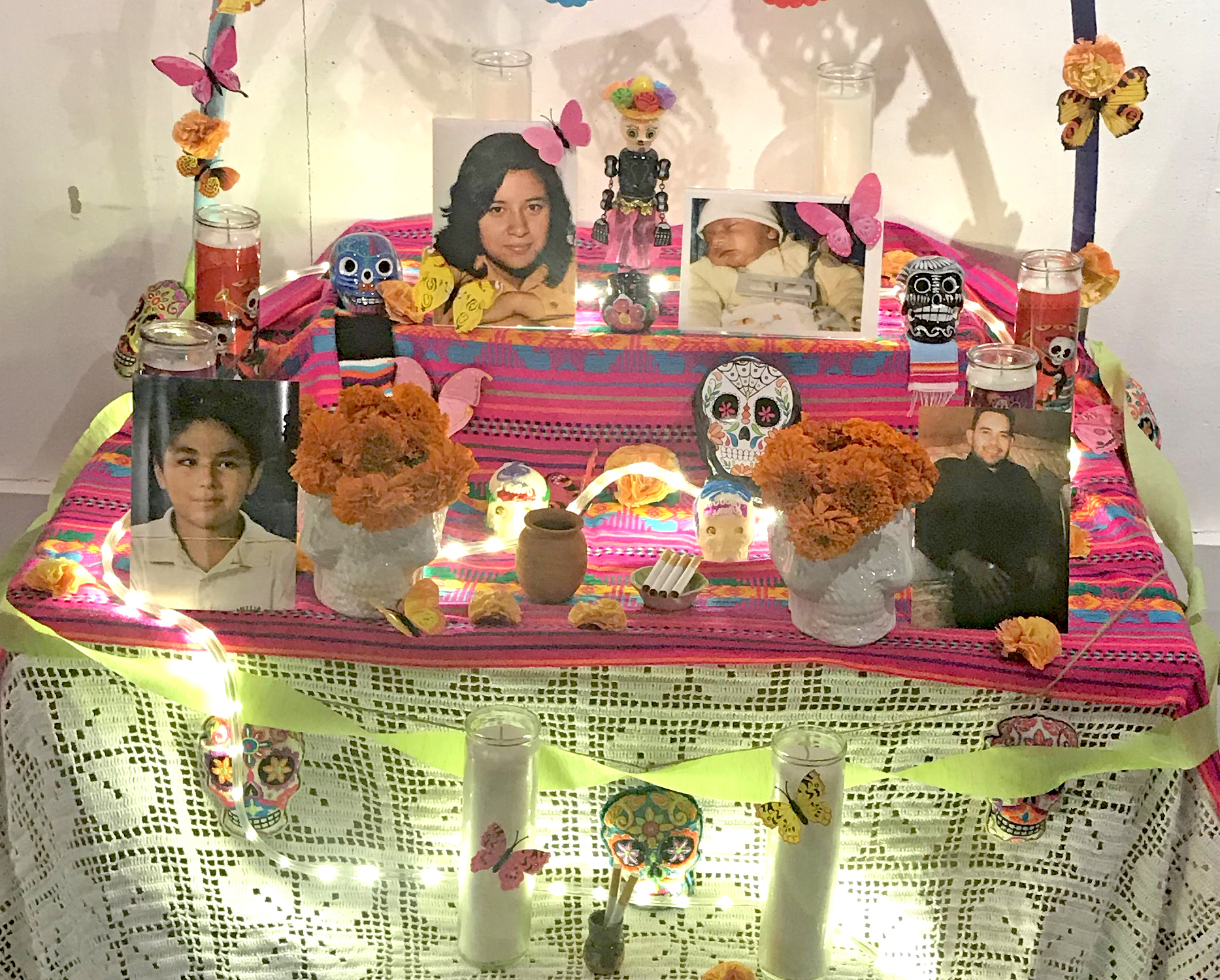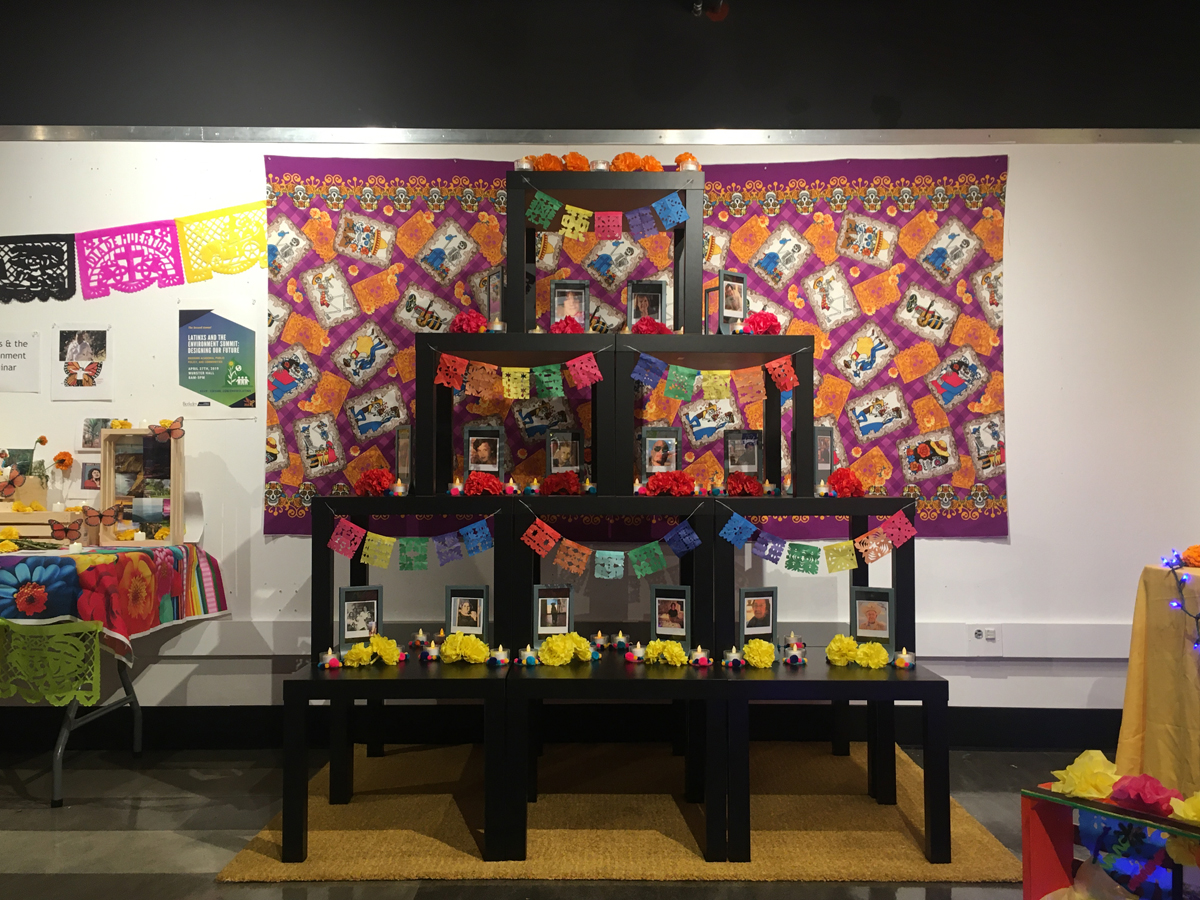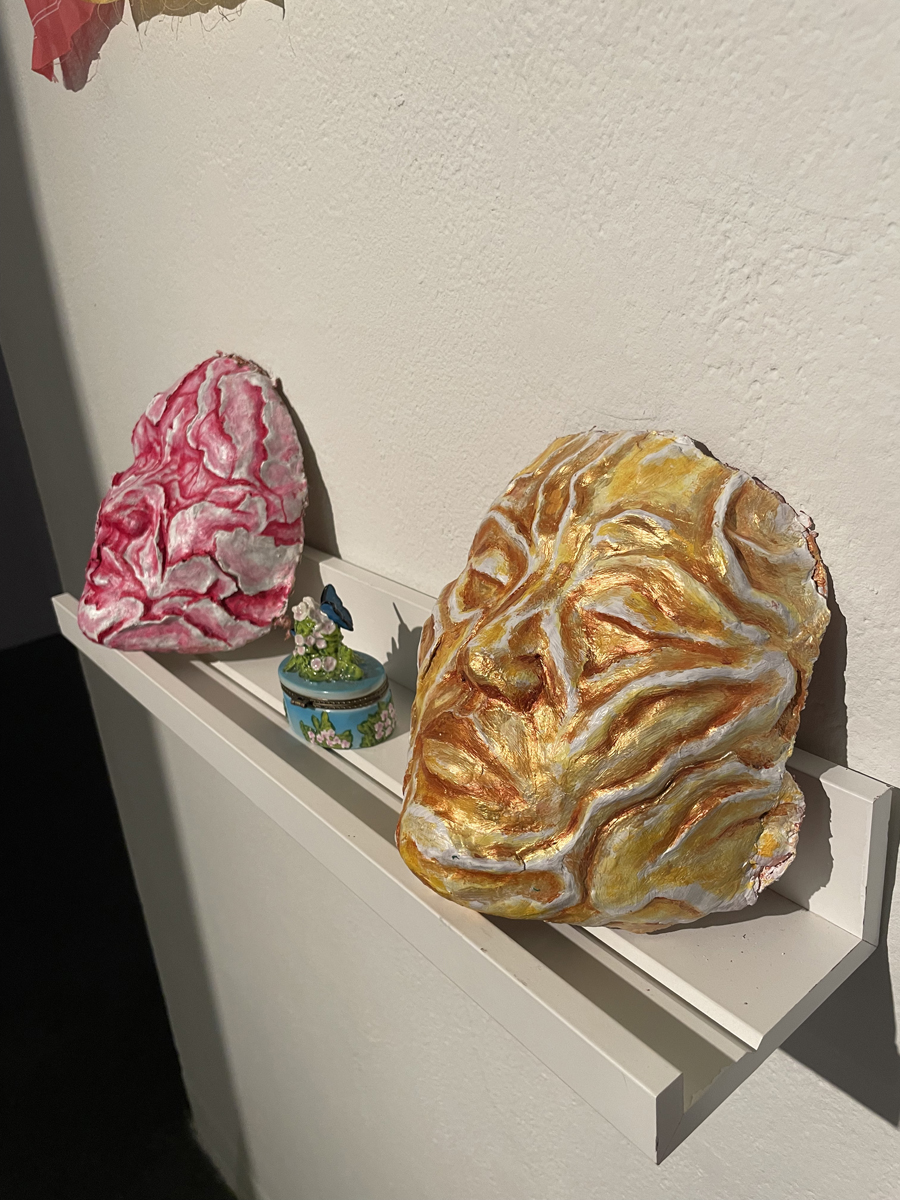
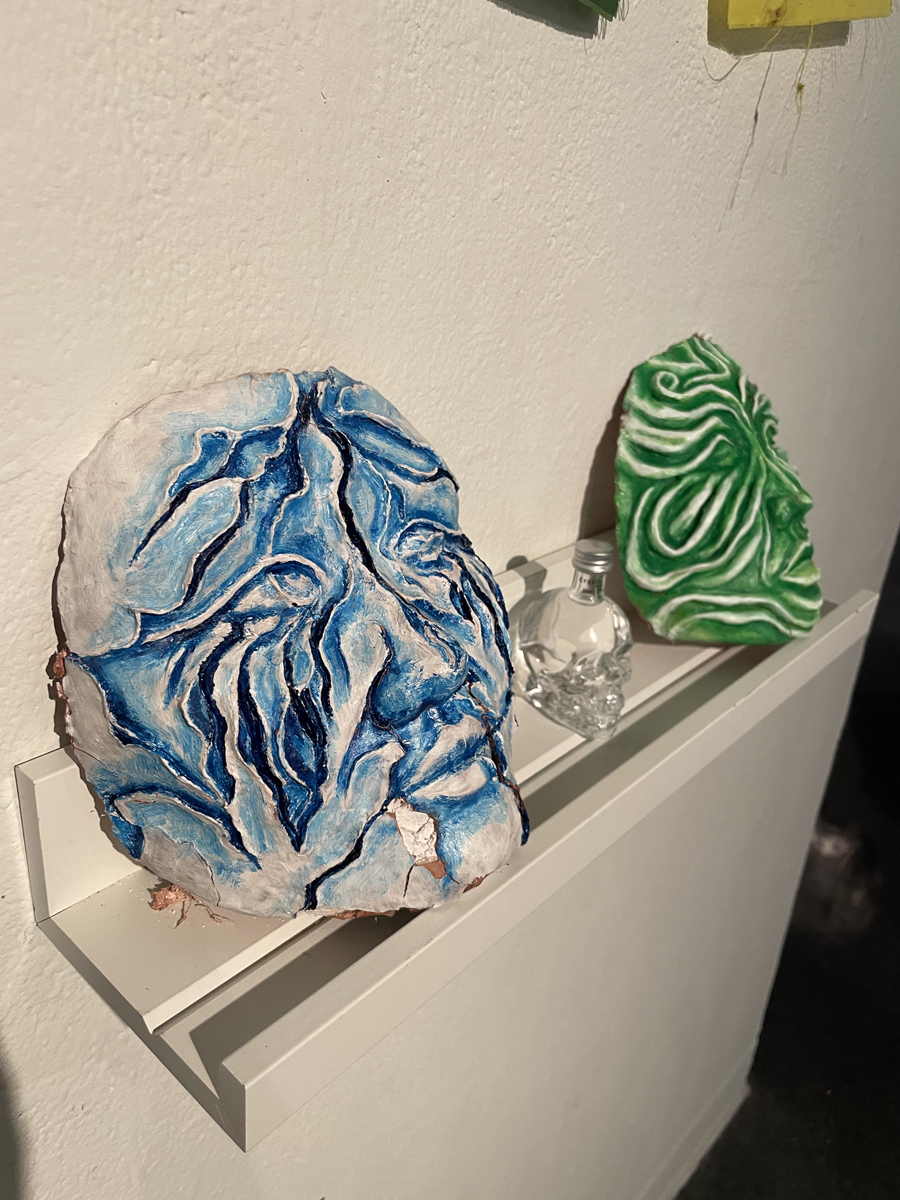

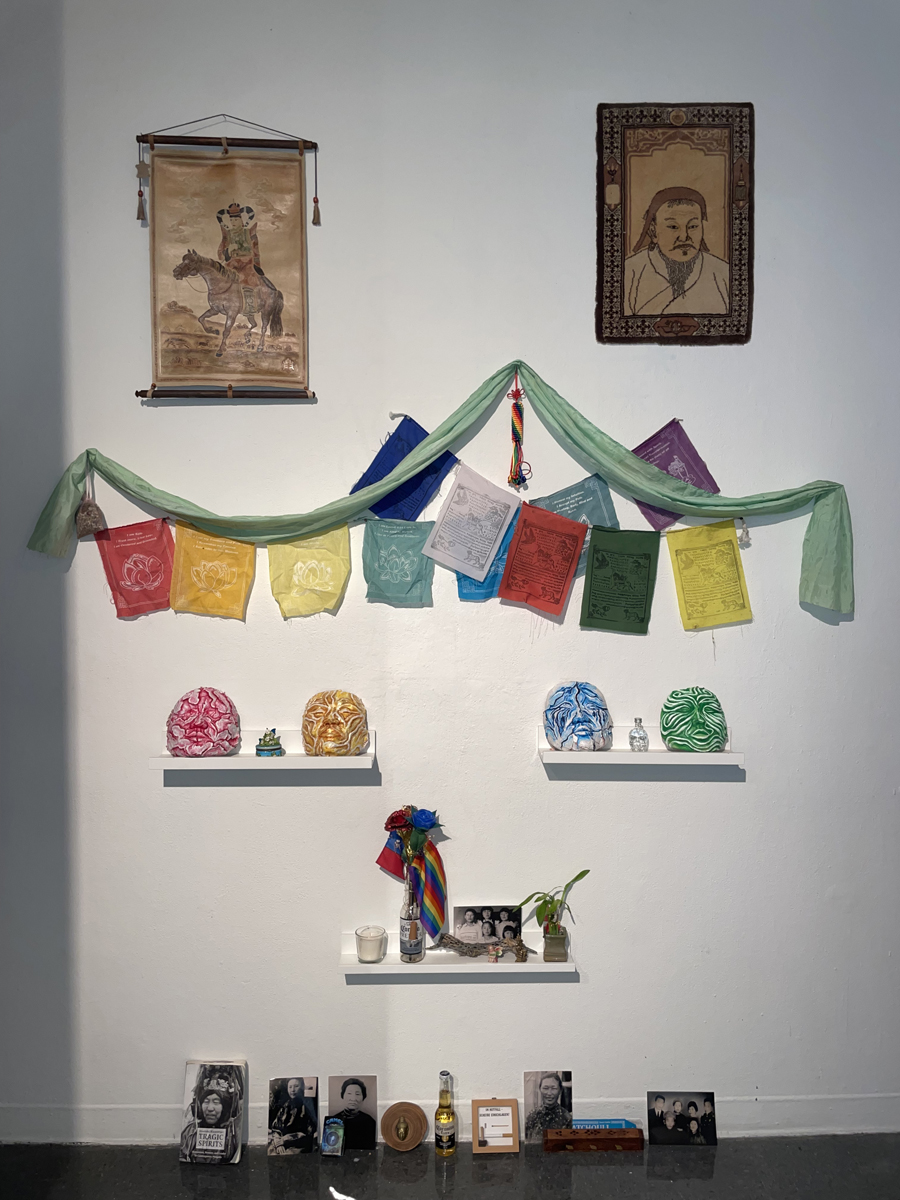

in considering the ways in which spirituality as a vessel of knowledge has been invalidated, exotified, and diluted by academic institutions, this installation explores the act of cultural reclamation as a source of healing. the masks reference the ancient mongolian art of mask making known as “tsam” (dancing demons), inspired by the work of mongolian american artist gankhuyag natsag.
drawing from my own artistic vocabulary as well as practices of the past, these masks are embedded within both a physical and metaphorical cultural context in a sort of altar display, paying homage to both buddhist and shamanistic visual elements and in doing so recognizing the associated legacies of imperialism, religious persecution, cultural erasure, and state sanctioned violence.
the title is an allusion to the book of the same name by manduhai buyandelger, an anthropologist at MIT who researches the function of shamanism in contemporary mongolia as a site of cultural and spiritual recovery following soviet era occupation and the suppression of indigenous ancestral worship. in understanding remembrance as a project of self-determination for oppressed peoples across the globe, i work to connect global struggles within a framework of settler colonialism and subsequent cultural genocide, moving towards a practice of reclamation through art and spirituality. i work through layers of intergenerational trauma and erasure, paying tribute to ancestors lost and forgotten to the violence of greed, powerplay, and the politics of amnesia. in understanding my own history, and the tragic spirits constantly at war within me, i hope to create a space that both recognizes and pays tribute to the tragedy and suffering many of us have inherited by birthright; pain that is forgotten, silenced, and sterilized by the writers of history.
the four masks represent different iterations of myself and everything i contain within me—emotions, personas, histories, ancestors, traumas, and connections. in exploring the self and the body, i am constantly reinterpreting and recontextualizing my relationship with myself and the world around me. these masks serve as an extension of my being, as physical manifestations of the feeling of having multiple identities. i am familiar with my demons; i give names and faces to these demons, to the good and bad that exists within each version of myself.
each mask is given different treatment and attention, evoking emotions that often take over my body—i carve into my own face, build ridges and mountains just to have them crack apart. i wanted something visceral, deeply organic; human and earthy yet still ethereal and elusive. in understanding and recreating my own face i give space to explore my body dysmorphia and borderline personality disorder; i find peace in the transformation of my face into something that eventually has become its own creature, its own being. i think about how we all hide behind masks, find comfort or empowerment behind these masks, even feel like we’ve become these masks… these shadow selves, the parts of us that live in constant conflict within us.
the four colors reflect eastern visual elements—blue being tenger, the color of the eternal blue sky, of the dalai (ocean), water being life, water being something i feel deeply within myself. red represents freedom and prosperity, but to me is also strength and passion and rage and power. red, ulaan, like the red city my family came from. the color of blood and lust. yellow (shar), or gold,(altan), is the sun for which i am named for. brillance and abundance and richness and pride and courage. green, nogoon, my father’s favorite color. green like lush mountains and plains and steppes in the huduu, like earth and life and oxygen. like snakes and envy and temptation. these colors are found in the buddhist prayer flags that frame the masks, colors i avoid in my painting practice even though they feel like home to me.
Share
